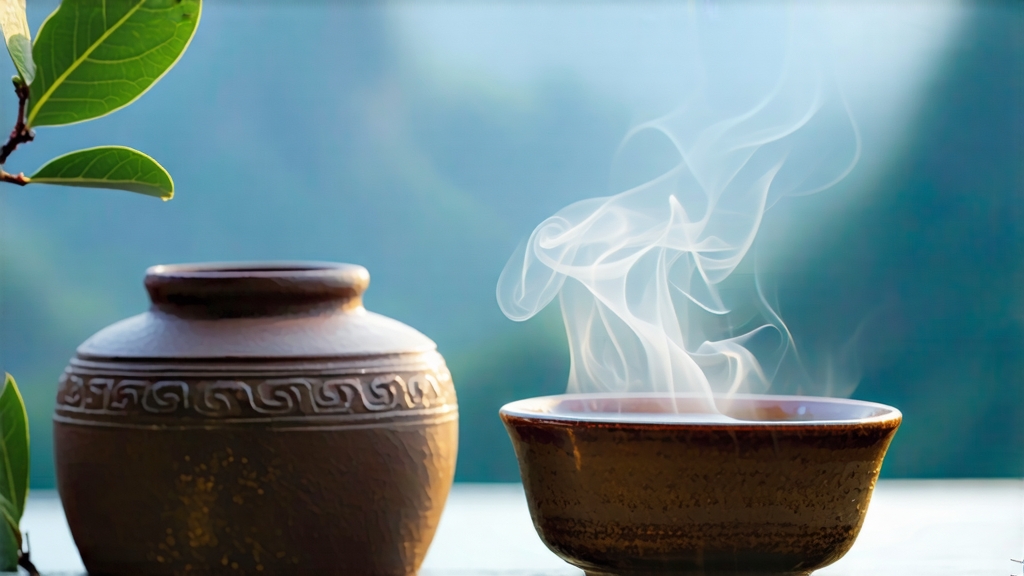
Tucked away in the humid, karst-pocked southwest of China, the small town of Liubao in Guangxi has been quietly perfecting a tea that most of the world has never heard of. Liu Bao—literally “Six Forts”—is the name of the place, the leaf, and the centuries-old tradition that turns raw Camellia sinensis into a midnight-colored liquor prized by dockworkers, emperors, and modern sommeliers alike. While Yunnan’s pu-erh grabs headlines, Liu Bao drifts like wood-smoke through the corridors of Chinese tea history, carrying with it the scent of camphor, betel nut, and the damp earth of the Nanling Mountains.
Historical whispers place Liu Bao on the imperial tribute lists as early as the Jiaqing era (1796–1820), but its commercial destiny was forged on the Pearl River. From Liubao, the tea traveled by porter and sampan to Guangzhou’s Thirteen Factories, where foreign traders bought it as “bohea noir” and shipped it to Southeast Asia. There, tin-mine coolies in British Malaya discovered that a daily gongfu pot of Liu Bao settled the stomach and cut through the metallic taste of mine water. The tea became currency itself: wages were paid partly in pressed bricks of Liu Bao because the leaf held its value better than colonial coinage. During the Pacific War, Japanese blockades starved the region of Liu Bao, and prices soared to ounce-for-ounce parity with silver. When the mines closed in the 1970s, the tea faded into obscurity—until a new generation of Chinese collectors unearthed vintage baskets in the night markets of Kuala Lumpur and Hong Kong, igniting a renaissance that now sees 1950s “Songpin” Liu Bao fetch more per gram than first-growth Bordeaux.
Botanically, Liu Bao is a large-leaf variety closely related to Yunnan’s dayezhong, but the terroir of Guangxi imprints a different signature. The province’s red lateritic soil is rich in iron and aluminum, while the subtropical monsoon climate wraps the gardens in fog for two hundred days a year. These conditions force the tea bush to grow slowly, thickening the cell walls and concentrating the polyphenols that will later transmute into Liu Bao’s hallmark mellow bitterness. Farmers pick one bud plus the third or fourth leaf—older, woodier material than the tender tips used for green tea—because the mature leaves withstand the strenuous piling process that defines the style.
The craft begins in late April, after the Qingming rains have swollen the rivers. Leaves are plucked at dawn, wilted briefly on bamboo mats, then wok-fired at 280 °C for eight minutes to kill green enzymes. What follows is a dance between moisture and microbes unique to Liu Bao: the leaves are piled 70 cm deep in a humid room kept at 28 °C and 85 % relative humidity. Unlike the shorter “wo dui” fermentation of ripe pu-erh, Liu Bao’s dui cha lasts 10–14 days, during which indigenous microbes—Bacillus subtilis, Aspergillus niger, and a rare yeast Pichia fermentans—colonize the leaf. Workers in bare feet turn the pile every 24 hours, feeling for the rise in temperature that signals respiration. When the core hits 45 °C, they scatter the heap, allowing heat to escape and oxygen to reinvigorate the fermentation. The leaf darkens from jade to umber, and a sweet, almost medicinal aroma seeps out—what locals call “chen xiang,” the old fragrance.
Post-fermentation, the leaf is steamed, pressed into forty-kilogram gunny sacks woven from wild jute, and transferred to the “cooling cave,” a naturally ventilated limestone cavern whose ambient temperature hovers around 20 °C year-round. Here the tea rests for a minimum of six months, but often for decades. The jute breathes, permitting micro-oxidation, while the cave’s constant humidity encourages slow maturation. Over time, the sacks acquire a white bloom of harmless mold that perfumes the leaf with camphor and cedar. Connoisseurs speak of three ages of Liu Bao: “qing cang” (young storage, 1–5 years), “lao cang” (old storage, 6–20 years), and “gu cang” (ancient